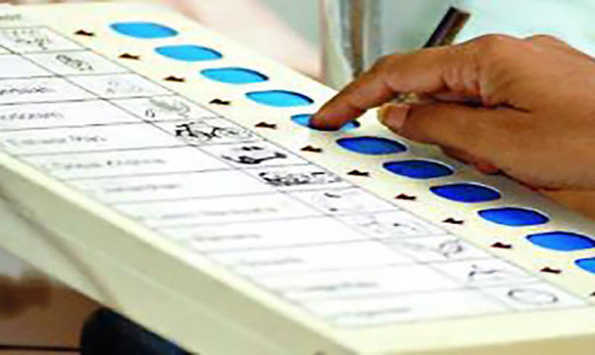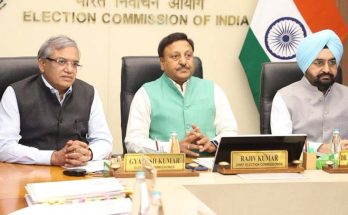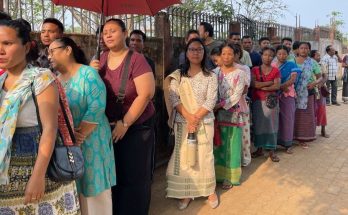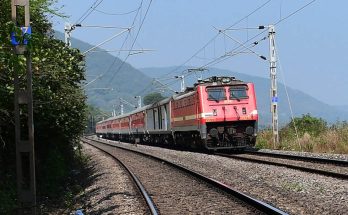By Nirendra Dev
Political activism gaining momentum and as all eyes are on the crucial May 19 voting to nine parliamentary constituencies in West Bengal, the poll related violence is certainly back in national discourse.
Kolkata North, Kolkata South, Dum Dum, Barasat, Basirhat, Jadavpur, Diamond Harbour, Jaynagar and Mathurapur are to go for the polls on Sunday amid an unprecedented row between the ruling party in the state and the ruling party in the country – the BJP.
Old timers quoting statistics and ‘historical facts’ say the political violence in West Bengal is only a throwback to a culture that was unleashed in the state for three decades under the Left.
Not many in the national political circle and key hubs of the season such as Varanasi – from where Prime Minister Narendra Modi is contesting – can deny this argument.
Obviously, according to political observers, the poll process will come under more detailed scrutiny as Trinamool Congress and other opposition parties have also directed their tirade against the Election Commission.
The tumultuous late 1960s and early 1970s saw the Marxists ‘resist’ CRPF hegemony unleashed by the Congress. In later stage, says Varanasi-based history teacher Lajpat Raj Gupt, the Communists controlled things and did exactly what they had opposed.
“Violence in Bengal elections became the order of the day as Left cadres indulged in 24X7 twelve month-long electoral management. This came to known as scientific rigging,” he says.
He further says at least 86 political workers were killed in clashes in 1988-89 and even after 20 years in 2009 Lok Sabha elections at least 963 poll-related violence were reported. This made 18 percent of the total national figures.
Agreeing with him, others say there came a time when people asked ‘where is West Bengal heading after three decades of Marxists rule’ – things seemed to have hardly changed yet again.
“We have the same question. Where is West Bengal heading after eight years of Mamata Banerjee rule? If not worse,” says BJP leader in the state Amitav Banerjee.
In this context, many say Mamata Banerjee’s legacy of Chhatra Parishad (student politics) could be also a trigger.
Under President’s Rule in 1970-72, the SS Ray-led Congress government backed by Indira Gandhi regime in Delhi and aided by the Congress-led Chhatra Parishad Students’ Union, repressed the Leftists, arresting, beating and killing hundreds indiscriminately.
Residents in Bengal’s townships like Raniganj and Durgapur say the culture of political violence in West Bengal also related to ‘land mafia and promoters’ nexus with political activists and leaders.
“A class of people came to be called promoters (involved in real estate). Many of these promoters were either at mercy of local Left leaders or were party functionaries themselves. Cadres supplied building materials and earned huge profits.” says Raniganj-based lawyer Dulal Sen adding under Trinamool this class became more powerful and came to be called ‘Syndicate’.
Another statistics reveal that during the 2014 Lok Sabha elections, wherein Mamata Banerjee reinforced her dominance – out of a total of 16 political workers killed across India – seven (that is almost half) related to poll violence in West Bengal.
Besides the ‘attack’ on BJP chief Shah’s roadshow this week, there have been reports of violence in other parts of the city too.
The BJP’s new found leader and a candidate in Delhi, Sufi singer Hansraj Hans, was also prevented from addressing meetings in Kolkata on Tuesday. Sources said Hansraj Hans had to cancel his scheduled meetings in two places in Kolkata.
Another Varanasi-based Bengali resident Sushanto Chakraborty says, “In more ways than one the continuing saga of violence in West Bengal reflect the continuance of the violence of 1970s in Bengal”.
Apparently this school of thought suggests nothing has changed in West Bengal.
Tripura BJP leader and a state legislator Bhagwan Das echoes similar sentiment. Camping in Bhawanipur area in Kolkata and campaigning for the BJP nominees, he says, “I am surprised at the scale of violence unleashed by Trinamool goons. The violence here looks more dangerous than the Leftists-inspired violence we saw in Tripura during 25 years of CPI-M rule”.
The contest between BJP and Trinamool appears to be ‘serious’ as all these nine seats were won by the Banerjee-led outfit in 2014.
CPI(M) general secretary Sitaram Yechury, however, does not want to concede that the BJP has enhanced its support base in the state – which till 2011 remained a red forte.
“There is a tendency to believe that the fight is only between BJP and the Trinamool. It is not true, the Left candidates will snatch victory as footballer Messy can score goal,” Yechury told a Bengali news channel.
The importance of the electoral fray could be understand from the fact that on the last day of polling which ended on Thursday 2200 hours, Prime Minister held two poll meetings at Mathurapur and Dum Dum while Mamata Banerjee opted for road shows at Behala and Jadavpur areas of the city besides addressing a rally at Diamond Harbour.
Yet, the Left may poll about 20 per cent of votes at the state level. But still there is no uncertainty as to whether these will help communists win any seat.
In 2014 – the Left tally from Bengal was mere two. (UNI)




